Precision agriculture technology is like high-tech support for farmers, ensuring every part of their farm gets precisely what it needs to grow healthy crops.
Imagine having a tool that shows you where your plants are thirsty or where they need more food; that answers what precision agriculture is in the true sense. It does all this and more with the help of gadgets like satellites and drones.
In places like Southeast Asia, where many people depend on farming, smart farming helps farmers grow more rice, vegetables, and fruits without wasting water or fertilizers. This is notable because farmers can produce more food on the same land and ensure everyone has enough.
For example, precision agriculture for rice has helped increase yields and added benefits by up to 8.45% ((6222-5737)/5737 x 100) in countries like the Philippines and India. This means farmers are getting more rice from the same fields, which is excellent for feeding more people and earning more money.
By using technology to care for their crops more carefully, farmers improve their farms and help the environment.
What is Precision Farming?

Precision farming is not just a farming method; it’s a technological wonder transforming the agricultural landscape. At its core, precision farming is an advanced approach that harnesses food tech to optimize efficiency and sustainability in agriculture.
Imagine a farm where every action, from planting to harvesting, is guided by data-driven precision. Precision farming utilizes a sophisticated mix of technology in agriculture, from GPS-guided tractors to real-time soil sensors.
This high-tech synergy allows farmers to tailor their approach to each square meter of the field, ensuring that resources are used with pinpoint accuracy.
This isn’t just about increasing yields; it’s about doing so intelligently. Precision agriculture techniques focus on understanding the unique needs of different parts of the field.
From adjusting irrigation levels to providing precise nutrients, each action is a calculated move toward sustainability. This approach not only maximizes productivity but does so in an environmentally conscious manner.
Key Components of Precision Agriculture
Precision Agriculture uses advanced technology to make farming more accurate and efficient. This approach helps farmers use water and fertilizers more effectively, ensuring crop health and increased yields. Let’s look at the critical components of precision farming.
1. GPS Technology
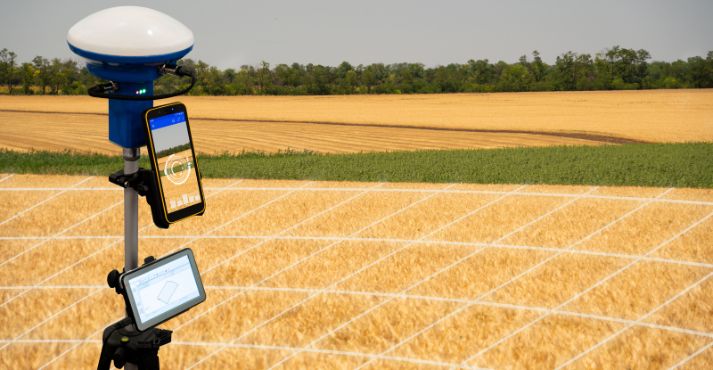
GPS Technology is a big part of precision farming because it helps farmers see where they need to go and what each part of their field needs. This technology uses satellites in the sky to send signals to devices on the ground, helping create super-accurate maps of the fields.
Here’s how GPS is used in precision agriculture:
- Accurate Mapping: Farmers can create detailed maps of their land with GPS. These maps show the exact shape and size of the fields, which helps when planting crops and deciding where to put things like water and fertilizer.
- Data Collection: As farmers drive their tractors, GPS helps record important information like how fast they’re going, where they’ve planted seeds, and how much fertilizer they’ve used. This data helps farmers understand what’s happening on their farms so they can make better decisions next time.
- Guiding Machinery: GPS is beneficial for guiding farm equipment. Tractors and sprayers can be set to follow paths that the GPS maps out so they don’t miss any spots or double-cover areas. This helps save time, fuel, and materials, making farming more efficient.
- Improving Yields: By using GPS to monitor and treat their fields precisely, farmers can ensure every part of their farm is used well. This means more crops can be grown in the same space, helping farmers get more produce from their land.
2. Remote Sensing
Remote Sensing is a critical tool in precision agriculture because it lets farmers look at their crops from above using drones and satellites. This helps them see things they can’t from the ground and make quick decisions to keep their crops healthy.
Here’s how remote sensing is used in precision agriculture:
- Monitoring Crop Health: Drones and satellites take pictures of the crops using unique These pictures help farmers see if their plants are healthy. For example, healthy plants reflect light in specific ways, and by looking at these images, farmers can tell if any plants are sick or stressed and need care.
- Detecting Problems: These aerial images can show problems like pests, diseases, or lack of water before they become too big. This means farmers can fix these issues early, often by treating just the affected areas rather than the whole field. This saves time, money, and resources.
- Tracking Changes: Remote sensing helps track changes in the environment that affect farming, like changes in soil moisture or weather conditions. This information can help farmers decide the best time to plant, water, and harvest crops, making farming more efficient and less wasteful.
- Improving Water Usage: Using images and data from remote sensing, farmers can see which parts of their fields need more or less water. This helps them use water more wisely, giving plants the right amount without waste. This application of precision farming also helps in water conservation.
3. Sensors and Data Collection
In precision agriculture, sensors are like the farm’s feelers, checking on the soil and air to see what’s happening. These sensors can tell if the soil is too dry or wet if it’s the right temperature for plants to grow, and if there are enough nutrients like nitrogen or potassium.
By monitoring these things, sensors help farmers decide when to water, plant, or fertilize.
Examples of Sensors in Singapore:
- Soil Moisture Sensors: These are used often in Singapore to check how wet the soil is. This helps farmers decide how much to water their crops so they don’t waste water.
- Temperature and Humidity Sensors: These sensors help monitor the air and soil temperature. This is really important in Singapore’s hot climate to ensure crops don’t get too stressed from the heat. It is one of the most important examples of precision agriculture.
- Nutrient Sensors: These help determine what kind of nutrients are missing in the soil so farmers can add the right amount of fertilizer. This helps the plants grow better and keeps the soil healthy.
4. Data Analysis and Insights
Data analysis in precision farming means turning all the data collected from sensors and other sources into helpful information. By looking at this data, farmers can understand how their crops are doing, what they need, and if there are any problems, such as pests or diseases.
Software Solutions :
- CropX: This user-friendly software helps farmers analyze soil data for better watering and fertilization decisions.
- FarmShots: This software uses satellite images to help farmers see how their crops are growing and if any areas need special attention.
5. Smart Irrigation Systems
Smart irrigation systems in precision agriculture use data to ensure crops get the right amount of water at the right time. These systems use sensors to check soil moisture and decide when and how much to water. This is really smart because it ensures plants don’t get too thirsty or too drowned.
Benefits of Water Conservation in Singapore:
- Saves Water: With smart irrigation, farmers in Singapore can use less water, which is super important in a city where every drop counts.
- Better Crop Growth: When plants get just the right amount of water, they grow better and healthier.
- Less Runoff: By using water wisely, there’s less runoff, which means fewer nutrients and chemicals going into rivers and lakes, keeping the environment clean.
6. Variable Rate Technology (VRT)
Variable Rate Technology (VRT) lets farmers apply fertilizers and pesticides in different amounts across their fields.
Instead of treating the whole field the same, VRT adjusts the amounts based on what each part of the field needs. This means no waste and no extra chemicals where they aren’t needed.
This is one of the most crucial precision agriculture best practices.
- Precise Application: VRT systems use data and maps to apply fertilizers and pesticides only where they are needed. This precision prevents the use of too many chemicals, which is good for the soil and water.
- Saves Money: Farmers save money and reduce waste by using resources like seeds, water, and chemicals more efficiently.
- Better for Nature: Less pesticide and fertilizer runoff means a cleaner environment, with healthier soil and water.
Benefits of Precision Agriculture
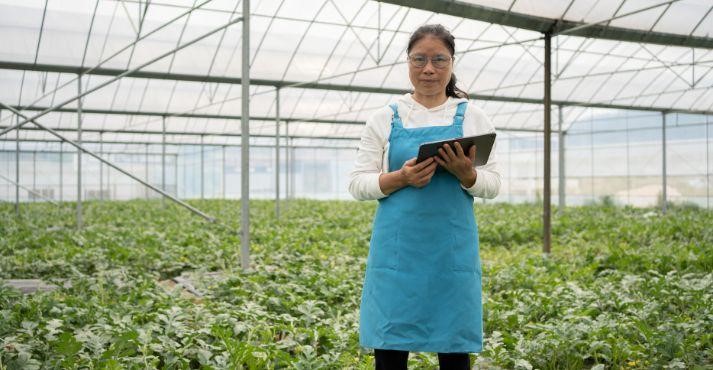
Precision Agriculture transforms farming with high-tech tools and strategies, making it more efficient, sustainable, and productive. This approach helps farmers use every resource, from water to fertilizer, more effectively to grow healthier crops and reduce waste.
1. Increased Efficiency
Precision agriculture technology boosts efficiency on the farm by ensuring resources are used where they are needed most. This innovative farming method uses data from sensors, GPS, and other technologies to guide decisions about planting, watering, and fertilizing. Farmers can avoid overusing resources, saving time, money, and materials while getting great results.
- Optimize Resource Usage: By using precision agriculture, farmers can apply the right amount of water, fertilizers, and pesticides to specific areas of their fields. This targeted approach prevents waste and ensures that resources are used efficiently to promote optimal plant growth.
- Reduce Waste: With precision farming, every drop of water and every ounce of fertilizer counts. By targeting their use, farmers significantly reduce waste, making their practices more cost-effective and efficient.
- Maximize Productivity: GPS and remote sensing technologies help map the farm in great detail, allowing farmers to understand variations in field conditions. This leads to better planting strategies and crop management, maximizing the farm’s overall productivity.
2. Improved Crop Quality
Precision farming positively impacts crop quality by providing consistent, ideal plant-growing conditions. Adjusting farming practices based on real-time data leads to healthier crops, higher yields, and lower levels of unwanted chemical residues.
- Enhanced Yield Consistency: Precision agriculture helps maintain consistent quality across the entire farm by monitoring crops and adjusting treatments where necessary. This means farmers can expect reliable yields year after year.
- Reduced Chemical Residue Levels: Farmers apply chemicals only where needed using variable rate technology (VRT), reducing the overall use of pesticides and fertilizers. Careful management leads to crops with lower chemical residues, making them safer and healthier for consumers.
3. Environmental Sustainability
Precision agriculture plays a crucial role in sustainable farming by minimizing environmental impact. This approach helps conserve water and soil, reduces pollution, and supports overall ecosystem health. It is one of the significant examples of precision agriculture.
- Minimizing Environmental Impacts: Precision farming practices, such as smart irrigation systems and targeted fertilization, help reduce runoff and chemical leaching into waterways. This protects local wildlife and keeps water sources clean.
- Conserving Natural Resources: By optimizing the use of resources like water and soil nutrients, precision agriculture ensures that these vital components of the farming ecosystem are preserved for future generations. This approach leads to more sustainable water and soil management.
- Supporting Ecosystem Health: Precision agriculture’s targeted approach means less land disturbance and fewer farm equipment emissions. This helps maintain a healthier balance in the local ecosystem, supporting biodiversity and reducing the carbon footprint of farming operations.
Why Precision Agriculture Matters?
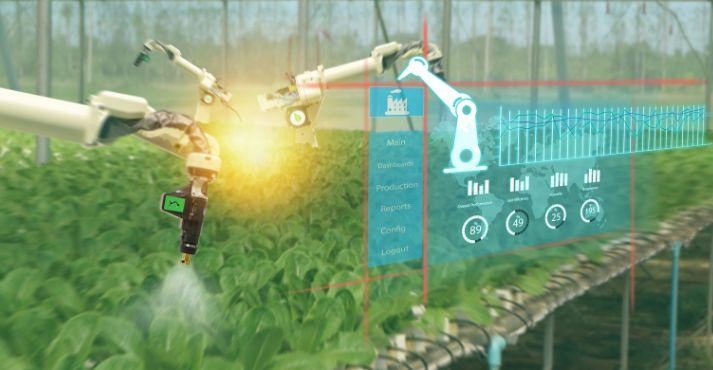
Singapore is a bustling city with skyscrapers and busy streets, but there is only a small amount of space for farms. Precision farming helps the city grow more food on its limited land.
- Limited Land Availability: Space is precious in Singapore. There must be more room for big farms, as in other countries. Precision farming helps by ensuring every little bit of land is used in the best way possible to grow crops. Farmers use precision agriculture best practices to determine how to get the most vegetables, fruits, and other plants from their small areas, increasing the amount of food they can grow without needing more land.
- Labor Shortages: In Singapore, finding enough people to work on farms takes a lot of work. Many prefer office jobs over farming. Precision agriculture equipment helps solve this by using machines, drones, and computers to do much of the work. This means fewer people are needed to plant, care for, and pick the crops. For instance, robots can help monitor and harvest plants, making farming more accessible and faster.
- Sustainable Practices: Singapore cares a lot about the environment. Precision agriculture helps by making sure water and fertilizers are used carefully. This means the farms don’t waste water, and fewer chemicals enter the ground. It’s all about keeping the air and water clean while growing healthy food. Techniques like drip irrigation and automated feeding systems ensure that plants get exactly what they need.
- Growing Demand for Local Produce: More people in Singapore want fresh and local food. Precision farming allows growing more food in the city, so people can access fresh vegetables and fruits without needing to be trucked or flown in from far away.
Precision Farming Technologies
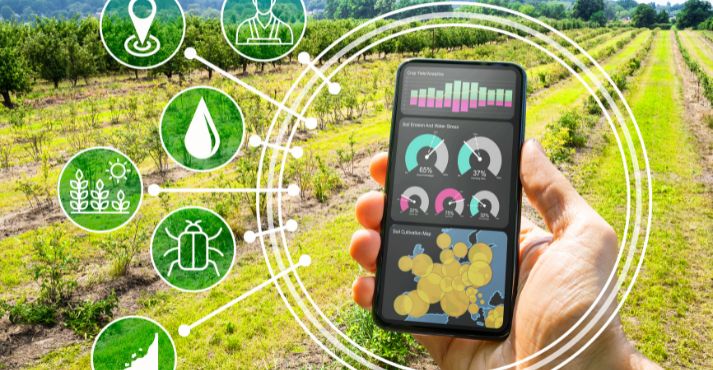
1. Satellite Imagery
Satellite imagery is a cornerstone technology in precision farming, playing a pivotal role in revolutionizing how we monitor and manage crops.
Utilizing Satellite Imagery
At the heart of precision farming lies the ability to see the bigger picture. Satellite imagery provides farmers with a comprehensive view of their fields from above.
This aerial perspective is a game-changer, allowing for a detailed analysis of crop health, growth patterns, and potential issues.
Remote Sensing in Agriculture
Satellite imagery is a form of remote sensing where satellites capture data without physically touching the crops. This non-intrusive method allows for regular and widespread monitoring, something that would be impractical on the ground.
The satellites orbiting above can cover vast areas, ensuring that no part of the field goes unnoticed.
Applications in Crop Monitoring
The applications of satellite imagery in crop monitoring are diverse and robust. Farmers can identify variations in crop density, assess the impact of environmental factors, and even detect early signs of diseases or pest infestations.
This information is invaluable for timely decisions, such as adjusting irrigation or deploying targeted crop protection interventions.
Crop Monitoring Technology
Satellite imagery isn’t just about pretty pictures; it’s about data and lots of it. Advanced technologies process this data, converting it into actionable insights.
This level of precision allows farmers to address specific challenges in different parts of the field. Whether it’s optimizing irrigation, managing nutrient levels, or identifying areas needing special attention, satellite imagery is the eye in the sky that guides precision farming.
2. Precision Farming Technologies
IoT and Sensor Technology
In precision farming, two key players—the Internet of Things (IoT) and sensor technology—join forces to usher in a new era of data-driven agricultural decision-making.
Role of IoT and Sensors in Precision Farming
Picture a farm where every aspect, from soil health to crop conditions, is continuously monitored and analyzed. This is the reality that IoT and sensor technology bring to precision farming.
These technologies work hand in hand, creating a network of interconnected devices that collect real-time data from the field.
Precision Agriculture Sensors
Precision agriculture sensors act as the eyes and ears of the farm. Placed strategically, they capture data on soil moisture, temperature, nutrient levels, and even the well-being of crops.
This information is transmitted in real-time, providing farmers with a comprehensive and up-to-date understanding of what’s happening in their fields.
Smart Farming Technology
IoT transforms a farm into an intelligent, interconnected system in combination with sensor technology. This network of devices communicates seamlessly, ensuring that every data point contributes to a larger picture.
The farm becomes an intelligent entity that adapts to changing conditions, making data-driven decisions to optimize everything from irrigation schedules to using fertilizers.
Data-Driven Agriculture: Turning Information into Action
The beauty of IoT and sensor technology lies in their ability to turn raw data into actionable insights. Farmers can make informed decisions based on real-time information, leading to precise and efficient farming practices.
Whether it’s identifying areas that need extra care or adjusting cultivation strategies, data-driven agriculture ensures that every action on the farm is purposeful.
3. Automated Machinery
In precision farming, automated machinery, including drones and autonomous tractors, stands out as a transformative force, revolutionizing how we approach agricultural practices.
Automated Machinery in Precision Farming
Imagine fields where tasks are performed with surgical precision, guided not by human hands but by automated marvels. Automated machinery in precision farming is about efficiency, accuracy, and a level of optimization that was once unimaginable.
Agricultural Automation
The introduction of automated machinery marks a paradigm shift in agriculture. Drones, equipped with advanced sensors, take to the skies to capture detailed aerial images of the fields.
Autonomous tractors navigate precisely, following predefined paths to perform tasks with consistent accuracy. This level of agricultural automation goes beyond what human hands can achieve, ensuring that every action is calculated and purposeful.
Role of Drones in Agriculture
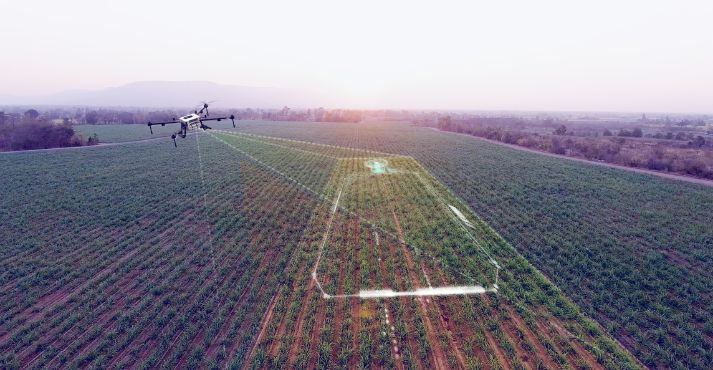
Drones have become the eyes of the sky for farmers. They provide a bird’s-eye view of the fields, allowing for rapid and comprehensive crop monitoring. Equipped with cameras and sensors, drones can detect variations in crop health, identify areas of stress, and even assess the impact of environmental factors.
This information is invaluable for making data-driven decisions, whether adjusting irrigation or identifying areas for targeted intervention.
Efficient Farming with Autonomous Tractors
Autonomous tractors bring efficiency to a whole new level. These intelligent machines can operate for extended hours without fatigue, ensuring tasks are completed without interruption.
With GPS-guided precision, they navigate the fields, performing tasks such as planting, harvesting, and even applying fertilizers with unparalleled accuracy. This not only saves time but also optimizes resource use.
Applications of Precision Agriculture in Southeast Asia
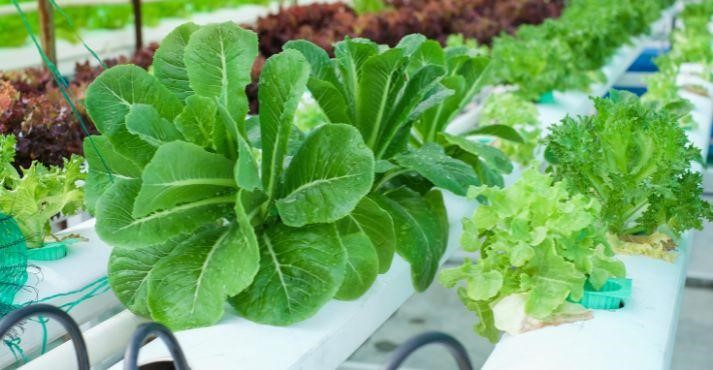
Precision agriculture is reshaping Southeast Asian farming, making it more efficient and suitable for modern urban settings.
By using high-tech tools and smart strategies, farmers are able to grow more food in smaller spaces and keep their practices sustainable and productive, which, of course, falls under precision agriculture best practices.
1. Urban Farming
In Southeast Asia, particularly in cities like Singapore and Malaysia, precision agriculture is vital in transforming urban areas into green growing spaces.
Techniques from precision farming are used in vertical farms and rooftop gardens to make the best use of limited space and significantly boost crop yields.
- Maximize Space Utilization: In cities where space is at a premium, precision agriculture helps optimize every inch of the area. Vertical farms use layers of growing trays, and rooftop gardens turn unused building tops into productive farmland. Precision farming techniques like carefully monitoring water and nutrients help these high-density farms thrive.
- Enhanced Crop Yields: Urban farms can precisely control the environment around their crops using sensors and automated systems. This includes perfectly regulating water, light, and nutrients, all tailored to the plant’s specific needs. As a result, crops grown in these urban settings are often healthier and more productive, contributing significantly to local food supplies.
2. Smart Farming Initiatives
Singapore is leading intelligent farming initiatives using precision agriculture technologies. These projects aim to enhance agricultural productivity and sustainability, ensuring that farming is both modern and eco-friendly.
- Local Projects and Initiatives: One notable initiative is Singapore’s use of innovative technology in its urban farms. For example, ComCrop, a rooftop farming venture, uses precision agriculture techniques to monitor plant health and improve growing conditions. Another project, Sky Greens, utilizes vertical farming technology to maximize the use of vertical space and reduce water usage.
- Enhancing Productivity and Sustainability: These initiatives show how precision agriculture can lead to impressive results in a short space of time. Farmers use data from various sensors to adjust their practices, improving plant health and yield without overusing resources.
Conclusion
Wrapping up our exploration of precision farming, it’s evident that this innovative approach has unleashed a transformative impact on agriculture. With its roots deeply embedded in data-driven precision, precision is a beacon of efficiency and sustainability in modern farming practices.
The significance of precision farming resonates in its ability to optimize resources, minimize waste, and elevate overall productivity. It propels an agricultural revolution where innovation takes center stage in every field.
As we conclude our thoughts on intelligent agriculture, we envision a future where farmers harness the power of data, cultivating each crop with precision while seamlessly integrating sustainability with efficiency.
In these concluding thoughts on precision farming, we recognize it as a chapter and a defining era in agriculture. It’s a promise that technology holds—a promise of a more sustainable, efficient, and resilient tomorrow for agriculture.













